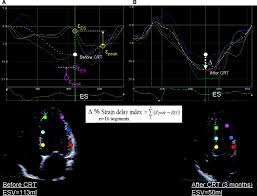TEST PLEASE IGNORE
RESEARCH TEST FUNDING MODULE –
Myocardial Contractility Indices Based on Strain Imaging
The principal determinants of chronic left ventricular(LV) dysfunction are reduced myocardial contractility and afterload excess due to adverse LV remodeling. To determine the relative contribution of each to a given instance of LV dysfunction, reliable quantitative indices of both myocardial contractility and afterload are needed. At the LV chamber level, ventricular volume and LV pressure can be used in a ventricular elastance model. But at the myocardial level, afterload must be normalized per unit of myocardium, conventionally done using wall stress (WS) calculations, while myocardial function is best characterized as systolic myocardial deformation, or strain (ST). Prior experimental model studies have suggested that the ratio of strain to afterload may be an effective contractility index. However, this has not been evaluated in human disease. We have recently shown that a nongeometric LV end-systolic afterload index (NGI, = (end-systolic LV pressure(P) × volume(V))/LV mass(M), or PV/M), may be superior to conventional circumferential WS (CWS) as a quantitative measure of afterload at the myocardial level, and correlates more closely than CWS with circumferential ST(CST), Therefore, we evaluated the ratios CST/CWS and CST/PV/M, as candidate contractility indices in normals(NL) and in patients with nonischemic dilated cardiomyopathy(CM).
Description
TEST PLEASE IGNORE
RESEARCH TEST FUNDING MODULE
Myocardial Contractility Indices Based on Strain Imaging

